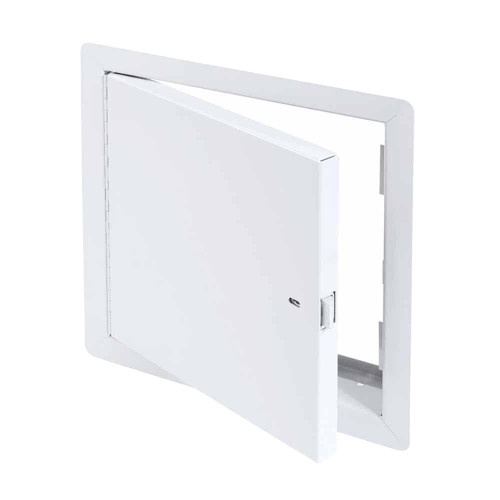In the rapidly evolving realm of construction, attention to every detail is paramount. As a construction professional, you recognize the significance of prioritizing safety and compliance. But amidst the considerations for fire safety, one crucial element often remains overlooked—fire-rated uninsulated access door.
This article will guide you through the fundamentals, advantages, and recommended practices for seamlessly integrating fire-rated uninsulated access doors into your construction projects.
Understanding the Basics
Let’s begin by understanding the basics. Fire-rated uninsulated access doors are specifically engineered to uphold the integrity of fire-rated barriers, such as walls or ceilings, all the while offering convenient access to concealed spaces. These doors are crucial in hindering the escalation of fire and smoke during emergencies.
Benefits Beyond Compliance
Beyond meeting regulatory requirements, fire-rated uninsulated access doors offer several practical advantages for construction professionals and building occupants.
- Cost-Effective Solution: Uninsulated access doors are generally more cost-effective than insulated ones. This makes them an ideal choice for projects where thermal insulation is not a primary concern. General contractors can allocate resources more efficiently without compromising on safety.
- Simplified Design and Installation: The simplicity of uninsulated access doors makes them easier to integrate into building designs. Their straightforward construction and installation process saves time and effort during construction, allowing for a more streamlined and efficient project timeline.
- Versatility in Applications: Uninsulated access doors can be used in various applications across different building types. Whether in commercial, industrial, or residential settings, these doors provide convenient access points without extensive insulation, making them adaptable to various environments.
- Space Optimization: In scenarios where space is a premium, uninsulated access doors offer a compact solution. Their design focuses on functionality, allowing for the installation of access points without sacrificing valuable square footage. This is advantageous in urban environments where maximizing space is essential.
- Compliance with Building Codes: Meeting building codes and regulations is a top priority in construction projects. Uninsulated access doors are designed to comply with fire-resistance requirements, ensuring that buildings adhere to safety standards. This compliance is essential for obtaining necessary permits and certifications.
- Maintenance Accessibility: Uninsulated access doors facilitate easy access for maintenance purposes. Whether reaching utility points, conducting inspections, or making repairs, these doors provide a hassle-free means of entry. This accessibility enhances the overall efficiency of building maintenance activities.
- Enhanced Fire Safety: Uninsulated access doors are a critical component in building safety, particularly in preventing the rapid spread of flames during a fire emergency. The fire resistance of these doors is measured in terms of time, commonly denoted in minutes, and indicates the duration the door can effectively maintain its integrity in a fire.
- Durability and Longevity: Uninsulated access doors like the BA-PFN fire-rated uninsulated access door are constructed from robust materials like steel or stainless steel. This material choice ensures that the doors endure the test of time, maintaining their integrity even in challenging conditions. This durability results in substantial long-term cost savings by minimizing the necessity for frequent replacements or repairs.
Selecting the Right Door for the Job
Choosing the appropriate fire-rated uninsulated access door is essential for ensuring compliance and functionality. Several factors come into play when making this decision:
- Fire Rating: Different projects may require varying levels of fire resistance. Ensure that the selected access door meets or exceeds the specified fire rating for the intended application.
- Material: Consider the material of the access door with the surrounding environment. Stainless steel doors, for instance, are durable and corrosion-resistant, making them suitable for various settings.
- Size and Location: Accurate measurement of the access point and careful consideration of its location are crucial. A well-placed and appropriately sized access door enhances both safety and accessibility.
Conclusion
In the dynamic construction world, where every detail counts, fire-rated uninsulated access doors can be silent guardians of safety and efficiency. As a construction professional, integrating these doors into your projects is not just about meeting regulations. It’s about enhancing the overall safety and functionality of the buildings you construct.
By understanding the basics and the benefits and following best practices in selecting the right access door, you can elevate your construction projects to new heights of safety and compliance. Remember, the small details make the big picture, and with fire-rated uninsulated access doors, you’re not just building structures—you’re building secure and resilient spaces for generations to come.

